_S01_025_Q01.png)
The figure shows elliptical orbit of a planet m about the sun S. the shaded area SCD is twice the shaded area SAB. If t1 be the time for the planet to move from C to D and t2 is the time to move from A to B, then:Solution in Gujrati
t1=t2
t1<t2
t1=4t2
t1=2t2
The correct Answer is:D
Step by step video & image solution for The figure shows elliptical orbit of a planet m about the sun S. the shaded area SCD is twice the shaded area SAB. If t_(1) be the time for the planet to move from C to D and t_(2) is the time to move from A to B, then: by Physics experts to help you in doubts & scoring excellent marks in Class 12 exams.
Topper's Solved these Questions
- BOOK - ALLEN CHAPTER - GRAVITATIONEXERCISE - EXERCISE 311videos
GRAVITATION
- BOOK - ALLEN CHAPTER - GRAVITATIONEXERCISE - EXERCISE 49videos
GRAVITATION
- BOOK - ALLEN CHAPTER - GRAVITATIONEXERCISE - EXERCISE 196videos
GRAVITATION
- BOOK - ALLEN CHAPTER - GEOMETRICAL OPTICSEXERCISE - subjective14videos
GEOMETRICAL OPTICS
- BOOK - ALLEN CHAPTER - KINEMATICS-2DEXERCISE - Exercise (O-2)47videos
KINEMATICS-2D
Similar Questions
The change in the value of acceleration of earth toward sun, when the moon coomes from the position of solar eclipse to the position on the other side of earth in line with sun is :
(mass of moon =7.36×1022 kg, orbital radius of moon =3.8×108 m.)01:19View SolutionAssertion : The difference in the value of acceleration due to gravity at pole and equator is proportional to square of angular velocity of earth.
Reason : the value of acceleration due to gravity is minimum at the equator and maximum at the pole.01:19View SolutionNewton's law of gravitation :
02:07View SolutionA prism of refractive index n1 & another prism of reactive index n2 are stuck together without a gap as shown in the figure.The angle of the prisms are as shown. n1&n2depend onλ,the wavelength of light according to n1=1.20+10.8×104λ2&n2=1.45+1.80×104λ2 where λ is in nm.
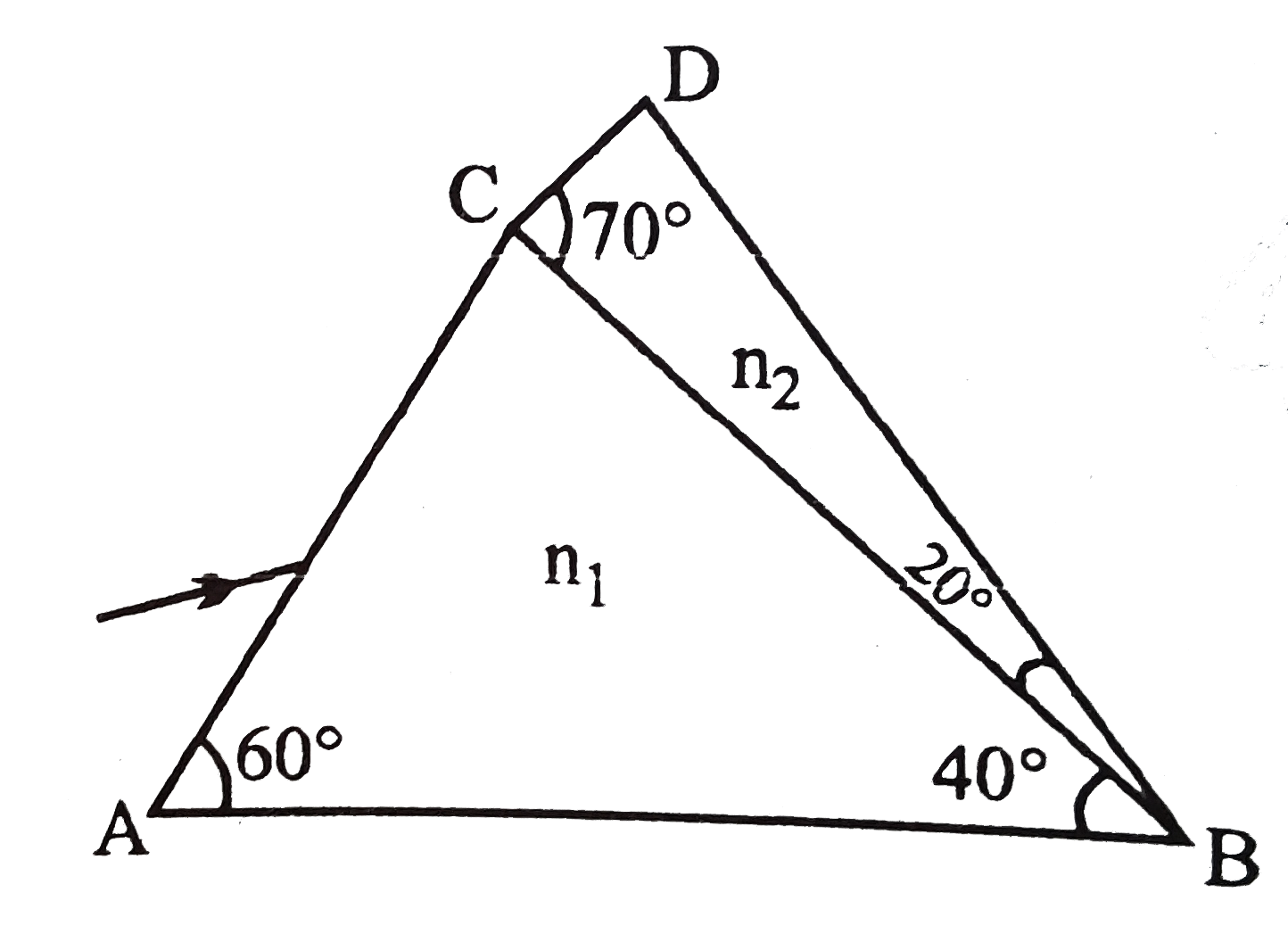
(i)Calculate the wavelength λ0for which rays incident at any angle on the interfaceBCpass through without bending at that interface.
(ii) for light of wavelength λ0,find the angle of incidencei on faceACsuch that the deviation produced by the combination of prism is minimum.02:47View SolutionA particle is moving in xy-plane .At certain instant the components of its velocity and acceleration are as follows ux=3m/s,uy=4m/s,ax=2m/s2anday=1m/s2. The rate of change of speed at this moment is
01:40View SolutionFigure shows the motion of a planet around the Sun S in an elliptical orbit with the Sun at the focus. The shaded areas A and B are also shown in the figure which can be assumed to be equal. If t1 and t2 represent the time taken for the planet to move from a to b and c to d, respectively then
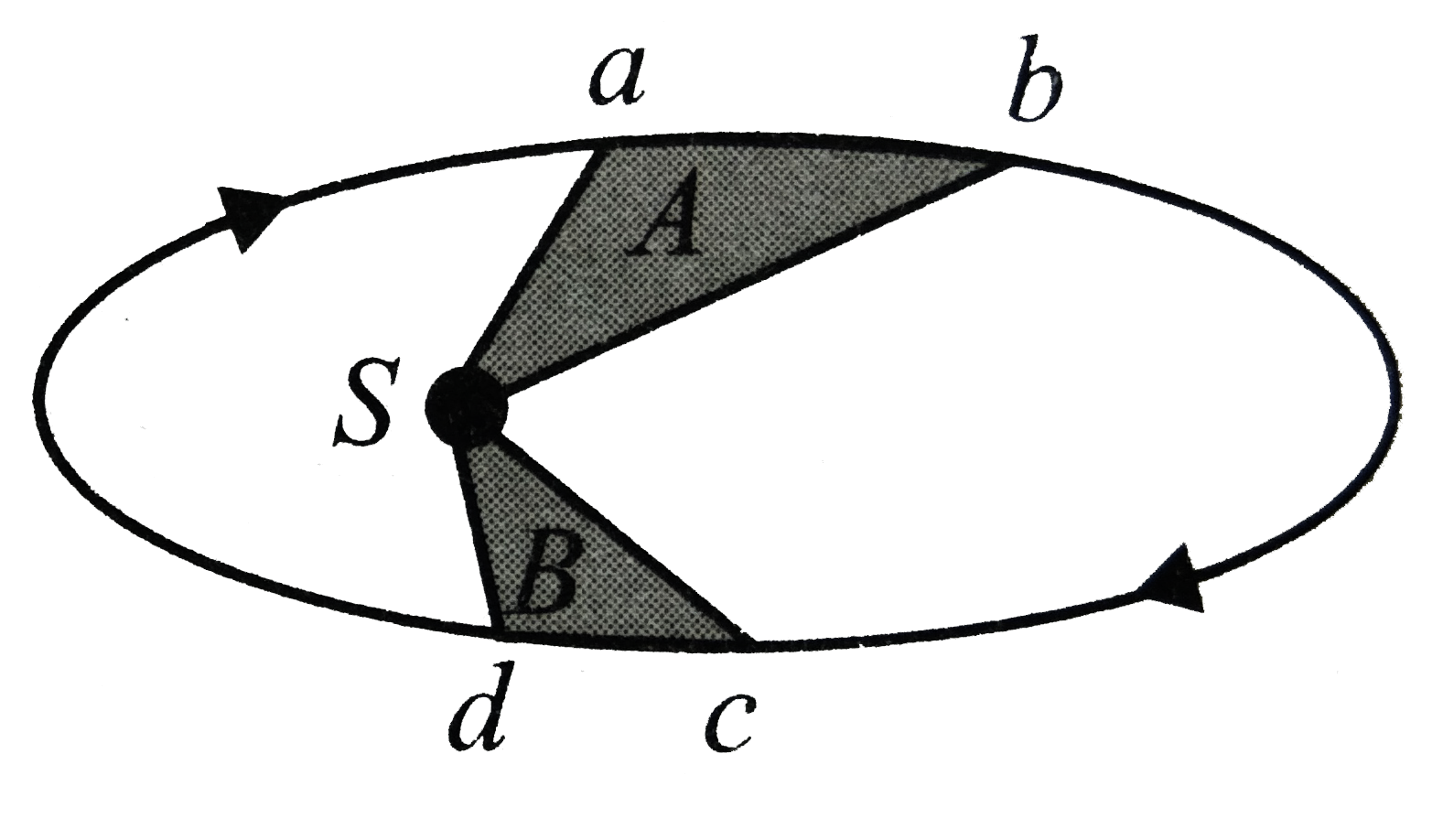 02:07View Solution
02:07View Solution_S01_025_Q01.png)
The figure shows elliptical orbit of a planet m about the sun S. the shaded area SCD is twice the shaded area SAB. If t1 be the time for the planet to move from C to D and t2 is the time to move from A to B, then:01:19View SolutionThe figure shows elliptical orbit of a plant P about the sun S. The shaded area CSD is twice tha shaded area ASB. If t_(1) is the time taken by the planet to move from C to D and t_(2) is the time to move from A to B, determine the ratio t_(1)//t_(2)
03:18View SolutionThe figure shows the motion of a planet around the sun in an elliptical orbit with the sun at one focus. The shaded area SAB is twice that of SCD. If t1andt2 are the times taken by the planet to move from A to B and C to D respectively, then
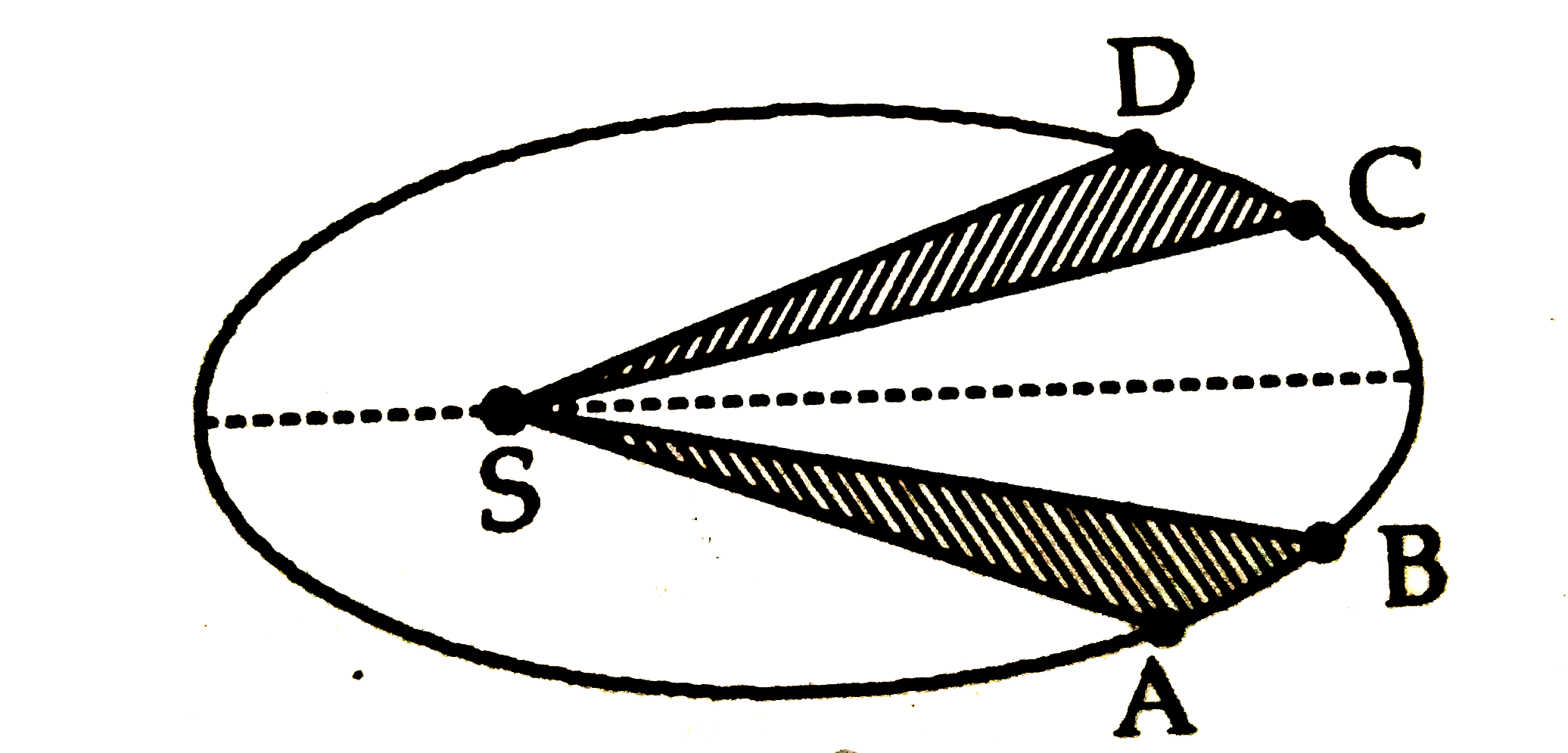 03:12View Solution
03:12View SolutionThe given figure shows the elliptical orbit of a planet m about the sun S. If t1 is the time taken by the planet of move from C to D and t2 is the time taken by the planet to move from A to B, then the relation between t1andt2 is [Given, area SCD = 2 (area SAB)]
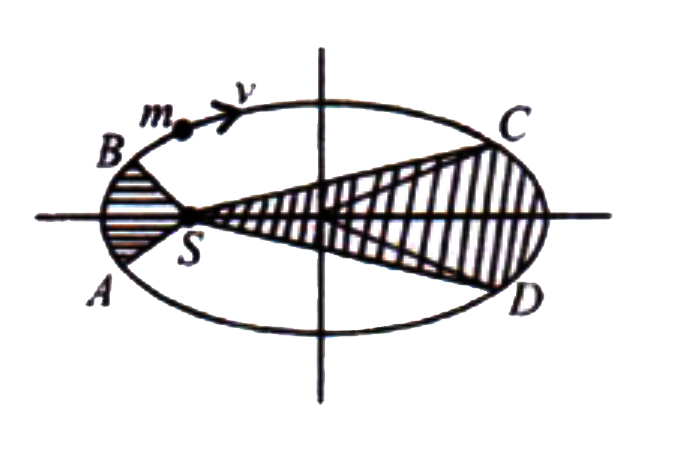 02:58View Solution
02:58View Solutionचित्र में एक उपग्रह m की सूर्य S के चारों ओर दीर्घवृत्तीय कक्षा दिखाई गई है । छायांकित क्षेत्रफल SCD, छायांकित क्षेत्रफल SAB से दुगुना है । यदि C से D तक जाने में उपग्रह द्वारा लिया गया समय t1 तथा A से B तक जाने में समय t2 हो, तो -
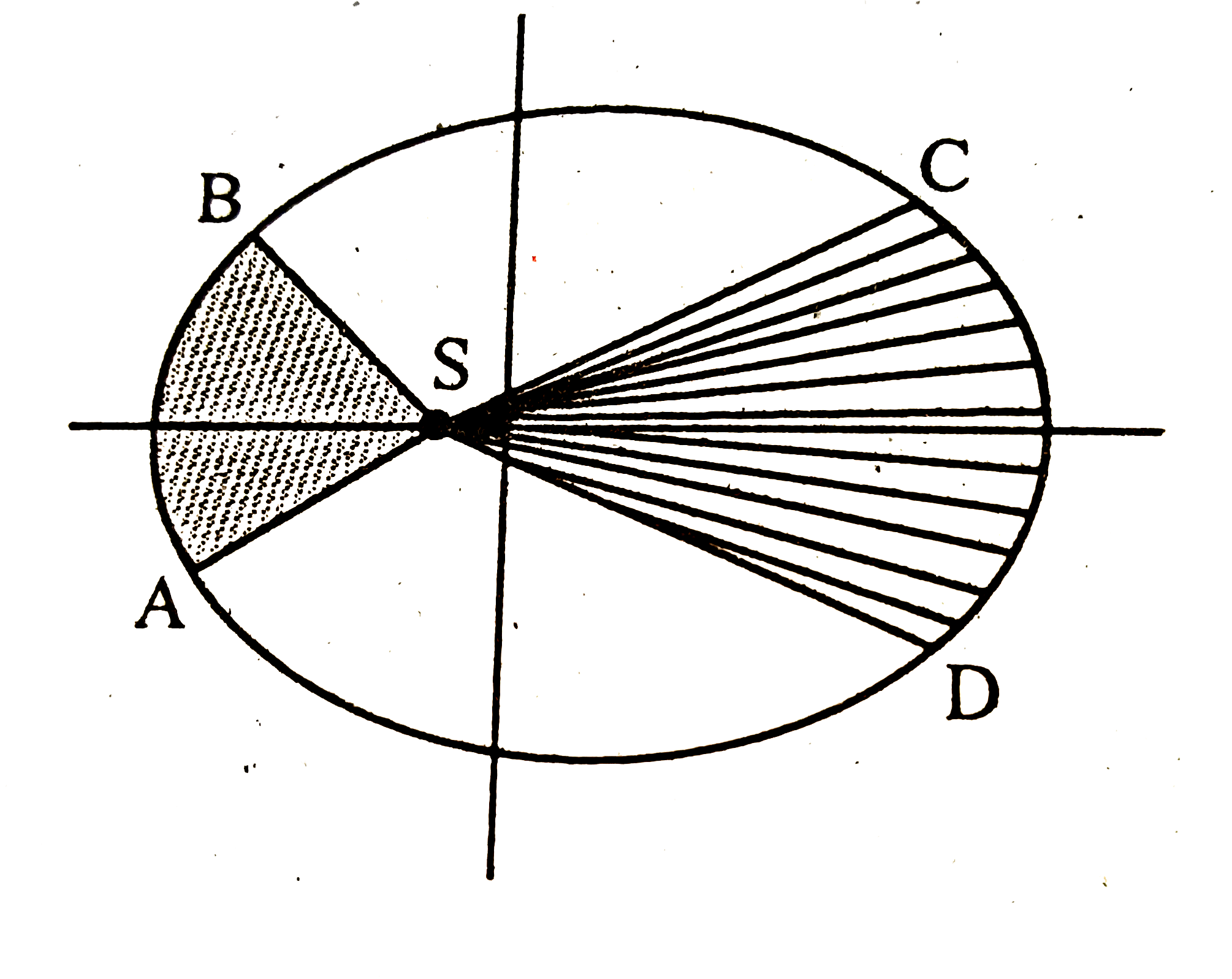 02:56View Solution
02:56View SolutionThe figure shows elliptical orbit of a planet m about the sun S. The shaded area of SCD is twice the shaded area SAB. If t_1 is the time for the planet to move from D to C and t_2 , is time to move from A to B, what is the relation between t_1" and "t_2 ?
02:41View SolutionThe figure shows elliptical orbit of a planet 'M' about the Sun 'S', the shaded area SCD is twice the shaded area SAB. If t_(1) is the time for the planet to move from C and D and t_(2) is the time to move from A to B then.
02:01View SolutionThe figure shows elliptical orbit of a planet m about the sun S. The shaded area SCD is twice the shaded are SAB. If t1 is the time for the planet to move from C to D and t2 is the time to move from A to B then ......
 01:47View Solution
01:47View SolutionThe figure shows elliptical orbit of a planet m about the sun S. the shaded area SCD is twice the shaded area SAB. If t_(1) be the time for the planet to move from C to D and t_(2) is the time to move from A to B, then:
01:04View SolutionThe figure shows elliptical orbit of a plant P about the sun S. The shaded area CSD is twice tha shaded area ASB. If t_(1) is the time taken by the planet to move from C to D and t_(2) is the time to move from A to B, determine the ratio t_(1)//t_(2)
View Solution

